Every painting is a self-portrait. Although he may not be seen on the canvas, the artist is present everywhere. Yet it is a self that even escapes the artist’s control, transcending (and sometimes even undermining) his intentions. However, in a self-portrait the artist makes himself present to you and to me, trying to manage how he is perceived. And given the fact that it is the artist’s disclosure of himself to his audience, a painted justification of who he is in the world, it is profoundly theological.
— Daniel Siedell, Who’s Afraid of Modern Art?
Curator and art critic Daniel Siedell explores the ways in which what a painting communicates provokes theological questions. He comments on the dramatically different messages conveyed by the self portraits of the German Renaissance painter, Albrecht Dürer and the Dutch Baroque master Rembrandt van Rijn:
“Dürer’s self-portrait is a powerful mask that hides the anxiety of a young man fighting to control his artistic legacy and financial future, whose anxiety is hidden yet bleeds out as a prominent signature. Dürer will know unspeakable success and receive the praise of kings; yet he will also experience physical suffering and struggle with emotional pain, the latter of which is revealed in his well-known engraving, Melancholia I, made fourteen years later.”
“Rembrandt’s self-portrait, on the other hand, is a conscious decision by an old man at the end of his life to give up, remove the mask, and lean into his suffering and weakness. Having earned and lost fortunes, achieved and lost reputation, having known personal heartbreak and professional failure in an emerging art market he could not manage, Rembrandt puts on the mask of St. Paul, one who suffered from a “thorn in the flesh” (2 Cor 12:7) and boasted in his weakness. At the end of his life, Rembrandt depicts himself with nothing but God’s promises, the source of his hope, perhaps even as it also represents a rationalization for his failures.”
“All self-portraits seem to toggle between Dürer’s and Rembrandt’s. They are masks the artist wears before the world—before his contemporaries and before us (and perhaps before God). If all paintings are, in some sense, self-portraits, then all paintings assert the ‘artist’ before us, whether or not he intends it, and whether or not he can control it. Like these two remarkable self-portraits, all paintings speak of both power and weakness, confidence and anxiety, desperation and detachment, joy and pain.”
“Yet the eyes of the artist in a self-portrait engage us, recognizing and judging us. They ask, as all paintings do: Who are you? What mask do you wear standing here, before me? Before your neighbor, yourself, and God?”
Comments welcome.

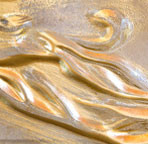

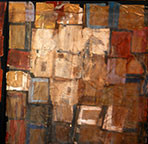

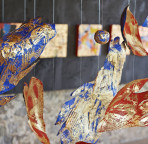
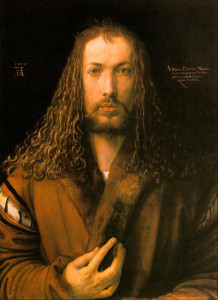
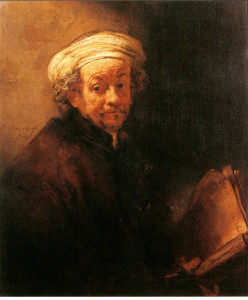
I am so very grateful for these on Fragments of Light. I don’t usually comment, but it is not because I don’t carefully read and ruminate on each post. I just feel that my “commenter” is broken, but it is also under repair. I want to encourage these weekly posts to continue because they enrich (repair) my understanding of myself and of art, enabling me to think christianly about my own life and work.
Thank you, Doug, for your encouragement. The more I read, the more impressed I am with the depth of the conversation already in play. I believe we need to support one another as we each grow into new understandings of our vocation. I am more than happy to keep passing on what I discover.